Peanut Butter Chicken Satay Curry
Jump to RecipeThis chicken satay curry is whipped up using a handful of ingredients, many being store-cupboard friendly ingredients. Making this recipe super budget-friendly, without compromising on flavour.
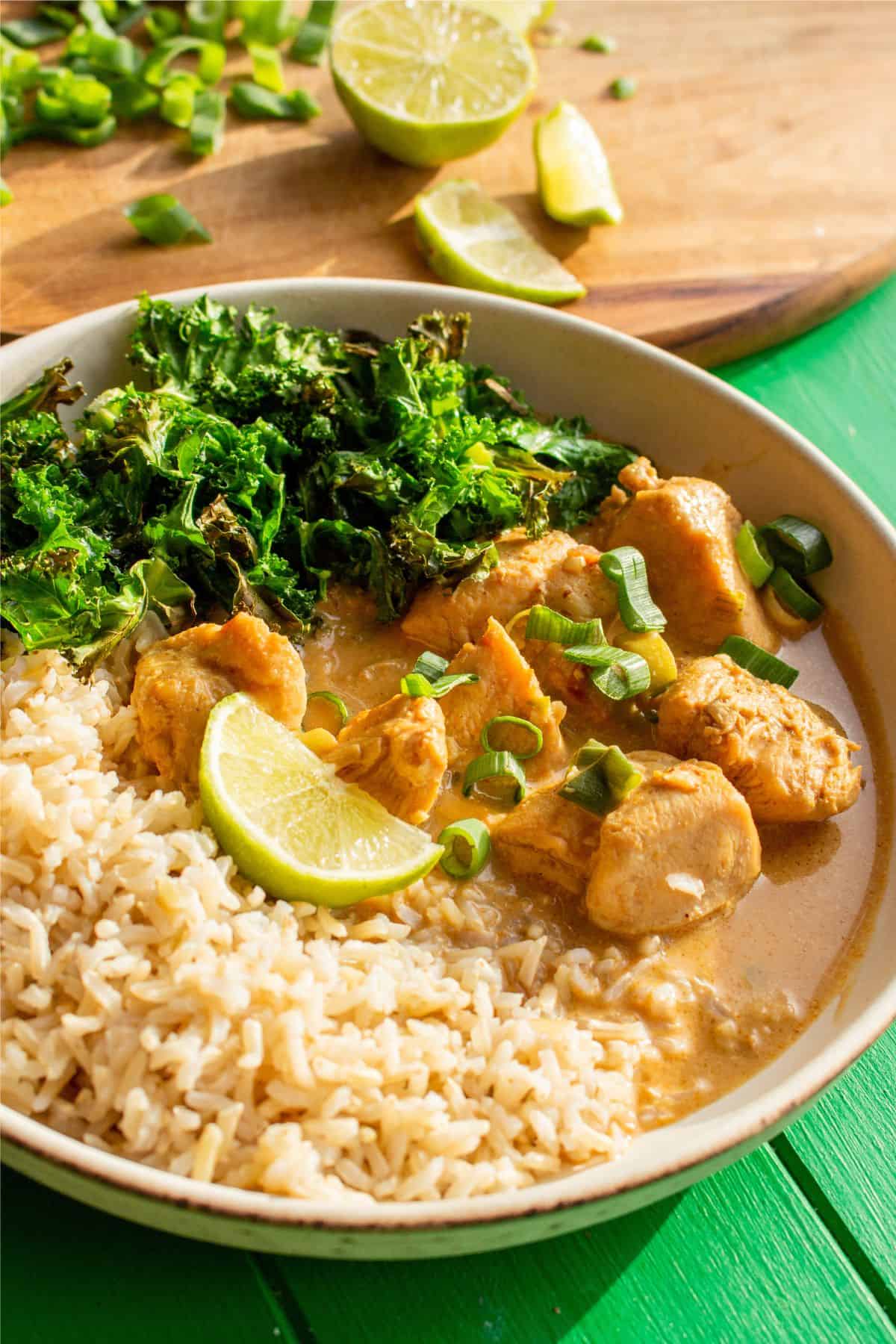
Table of Contents
About this recipe
This chicken satay curry recipe is one of the recipes that I developed in the first year of starting Beat the Budget. It’s remained one of my favourite recipes and that’s for a number of reasons.
This peanut butter chicken curry is:
- Made in under 30 minutes.
- Creamy and rich, thanks to the coconut milk and peanut butter
- High in protein, thanks to the combination of chicken breast and peanut butter.
- Balance of nutrients, with added greens from the crispy kale.
The flavours that are incorporated in this chicken satay curry recipe could be described as a fusion between many Asian cuisines. We have the satay inspired flavours which originate from Indonesia. The coconut milk adds a creamy Thai element to the curry. And the way that the curry powder, onion and chicken base is cooked reminds me of an Indian curry.
More chicken curry recipes to try…
Ingredients
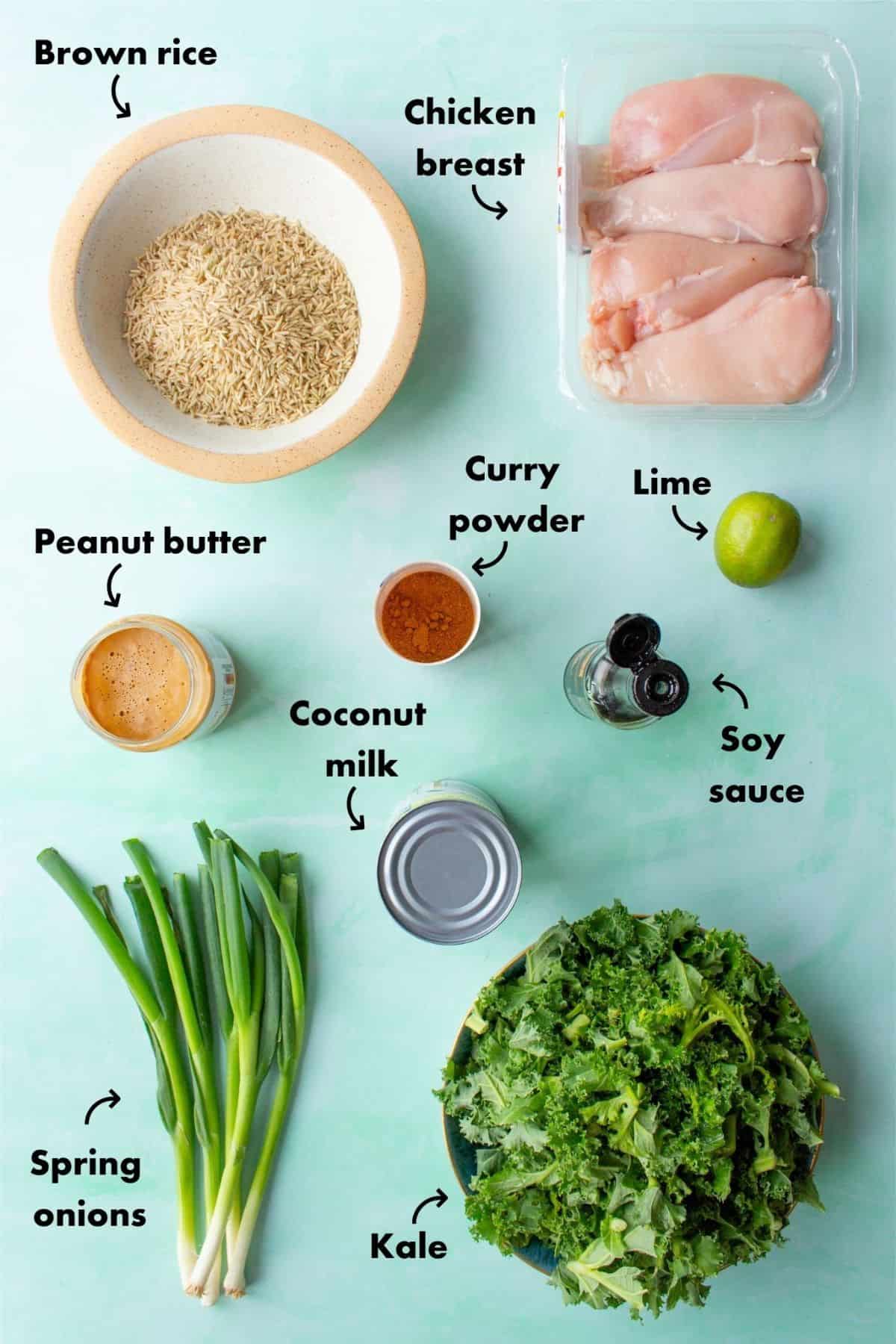
Chicken breast
This lean cut of chicken is perfect for this recipe. As the peanut curry sauce is rich, creamy and indulgent, I prefer using chicken breast rather than chicken thighs as they are a bit lighter. If you have chicken thighs on hand though, you can definitely use them!
Peanut butter
The backbone of flavour to this recipe is definitely the peanut butter. I opted for crunchy peanut butter, as it adds a bit of texture and interest to the sauce, which is otherwise pretty smooth.
Low Fat Coconut milk
This chicken satay curry is made with low fat coconut milk rather than full fat, as we get a lot of creaminess from the peanut butter. If you only have full fat laying around, feel free to use that and maybe add a bit more lime juice to balance out the extra richness!
Kale/Spring Onion
I looove a chicken and kale recipe. Crispy baked kale is a superior side dish, when paired with most recipes, but I love it for this recipe in particular as it contrasts against the creamy peanut curry sauce. Plus it adds a crispy seaweed vibe to the recipe and topped with spring onion you get that perfect combination.
Lime/Soy Sauce and Curry Powder
3 essential ingredients, the lime adds brightness and acidity to balance out the satay sauce, the soy sauce adds an umami punch and a mild curry powder for that smooth mellow curry flavour.
See the recipe card for full information on all ingredients and quantities.
Recipe Substitutions
Thanks to the coconut milk, this recipe happens to be a dairy free curry without sacrificing the creaminess. This recipe is also gluten-free! So if you’re a coeliac, you’re in luck – this recipe is perfect for you.
There’s two dietary requirements sorted. To substitute for others, follow these swaps:
Make this vegetarian: swap the chicken breast with roasted aubergine/eggplant. Here’s a different aubergine curry to try. The curry would also then be vegan!
Don’t like coconut milk: substitute with single cream. Trust me though, the coconut milk tastes better and isn’t overly coconutty!
Not a brown rice fan: Swap with basmati, jasmine or any long-grain rice that you like. To be fair, any rice you can get your hands on will taste great with this recipe.
Kale substitutions: Roasted tenderstem broccoli, wilted spinach, pak choi, mange tout will work great with this peanut butter chicken curry.
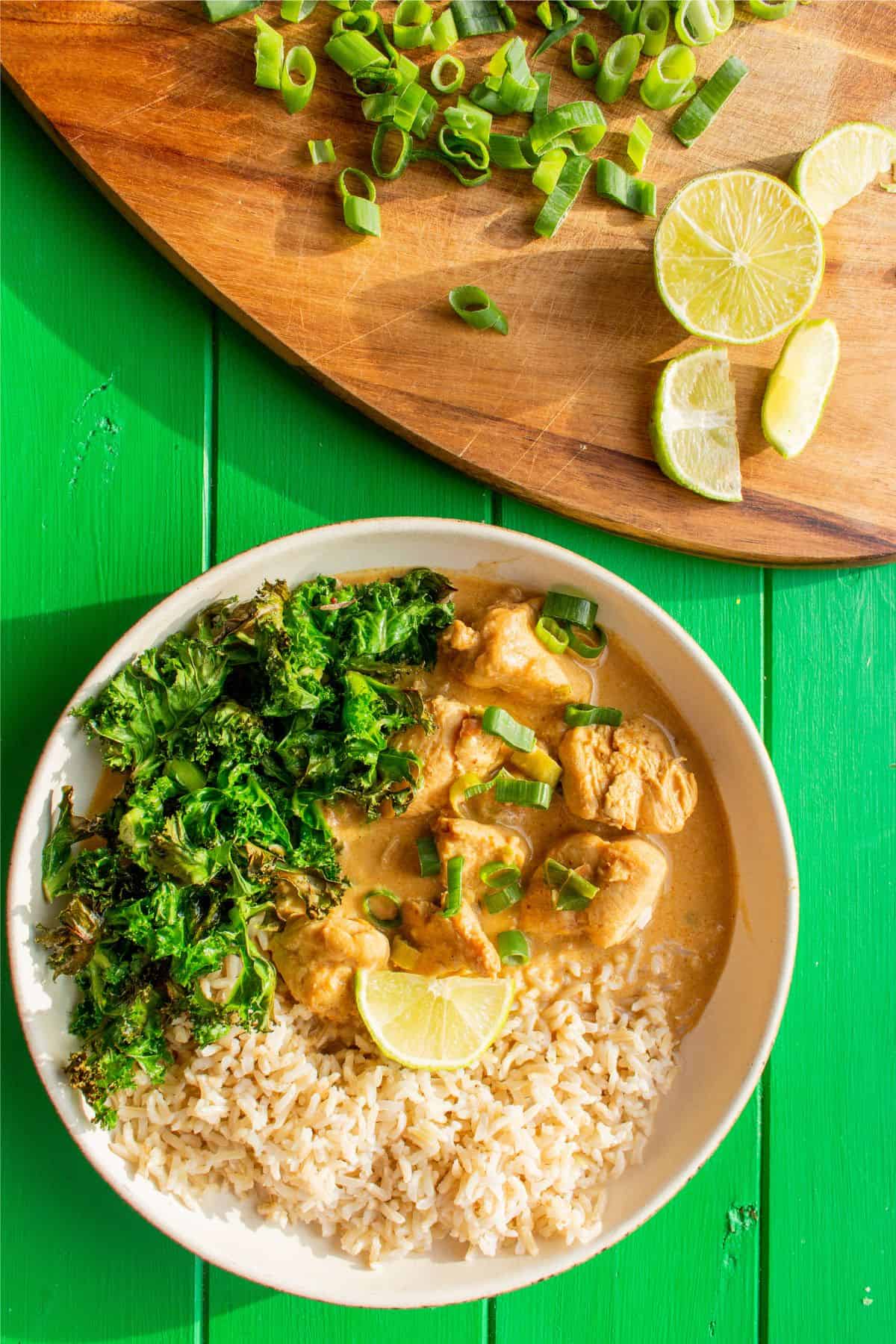
How to make this chicken satay curry
PREHEAT OVEN TO 200°C
Start by adding the rice to a medium saucepan with a 2:1 ratio of water to rice. Set your timer according to the packet time. Mine was 18 minutes.
- Next, prep the spring onions by chopping them in half, dividing the greener half and the lighter half of the onion, then thinly slicing (Image 1).
- In a large saucepan, add the lighter end of the sliced onion & chicken along with a tbsp of olive oil. Season with salt and gently fry for around 4 minutes, continuously stirring (Image 2).
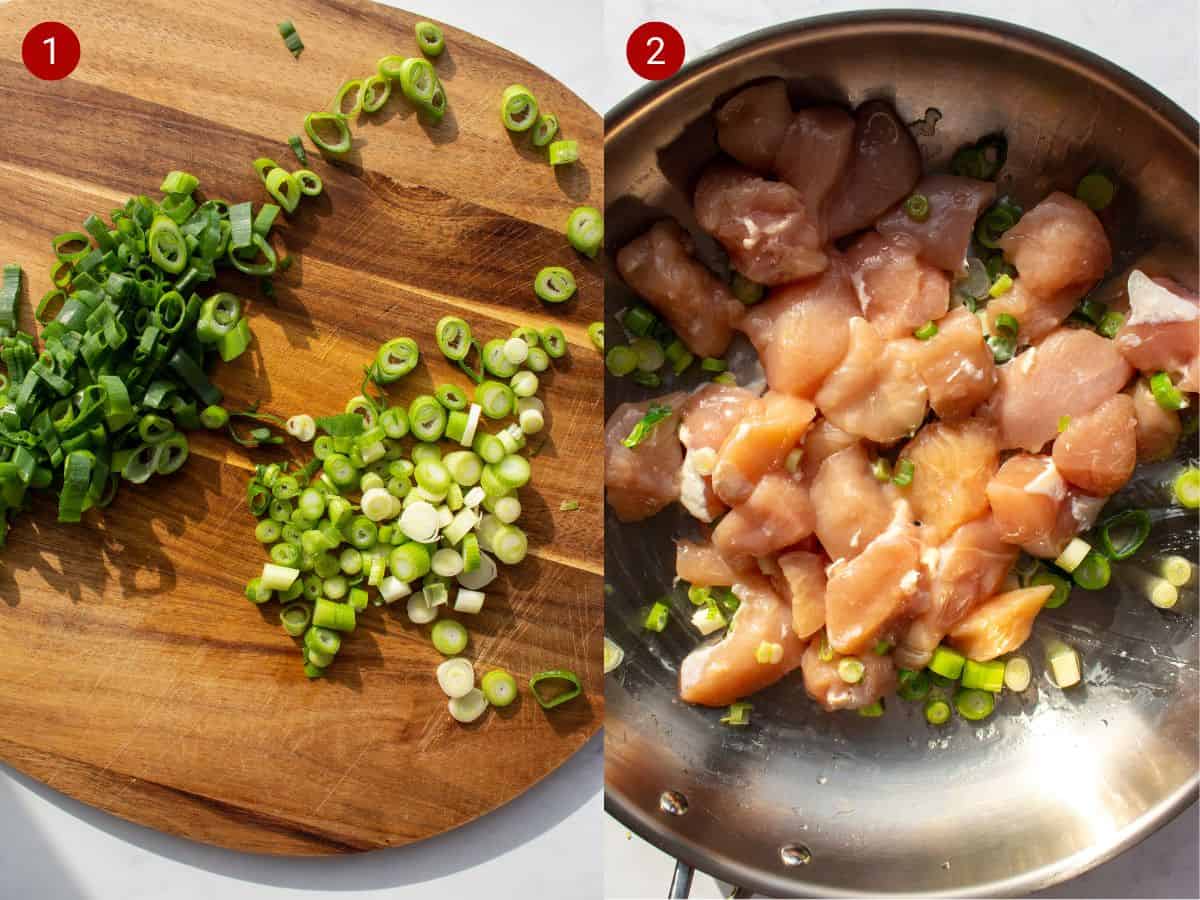
3. After 4 mins, add the curry powder and fry for a further minute. Deglaze with a splash of water when you get some sticking (Image 3).
4. Use a large bowl to combine the soy sauce and peanut butterwith a splash of water. This makes it easier to incorporate in the sauce. You can skip this step if your peanut butter is super runny (Image 4).
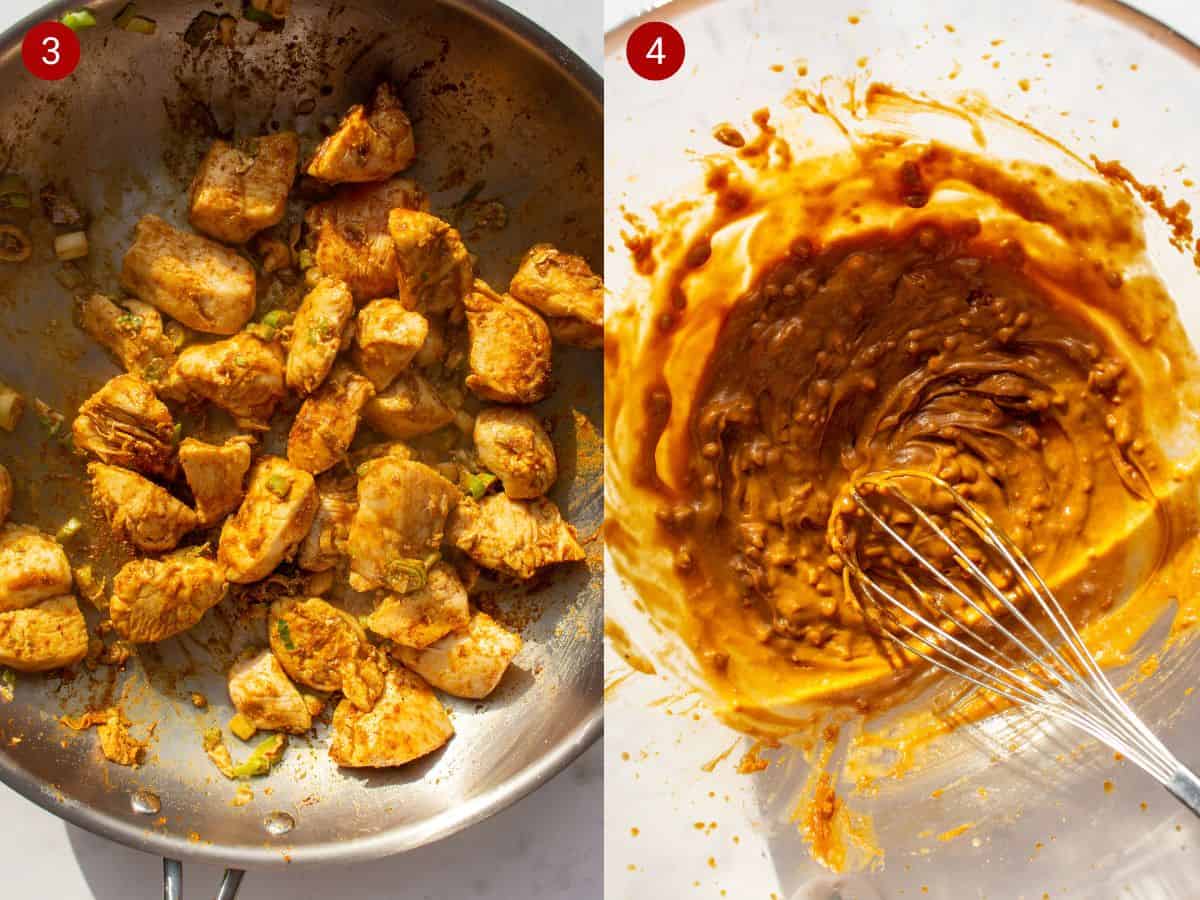
5. Add the peanut butter/ soy sauce mix along with the coconut milk (Image 5).
6. Season with salt and reduce to a low simmer and add the stock, timer set to 15 minutes (Image 6).
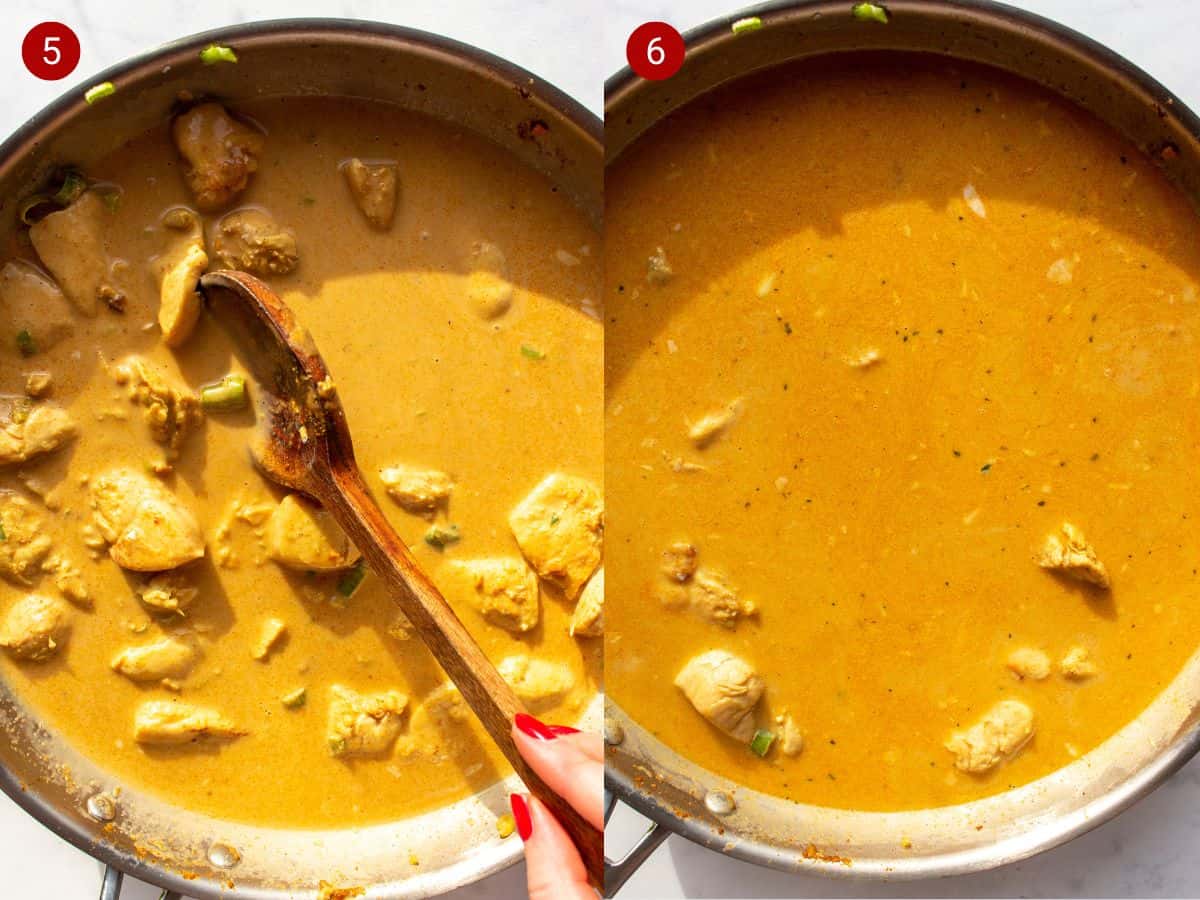
7. Drain the when cooked rice and set aside ready to serve (Image 7).
8. Add the kale to a large baking tray with a tbsp of olive oil. Use your hands to make sure all the kale bits get an even coating of oil. Pop in the oven for 7 – 10 minutes to get nice & crispy (Image 8).
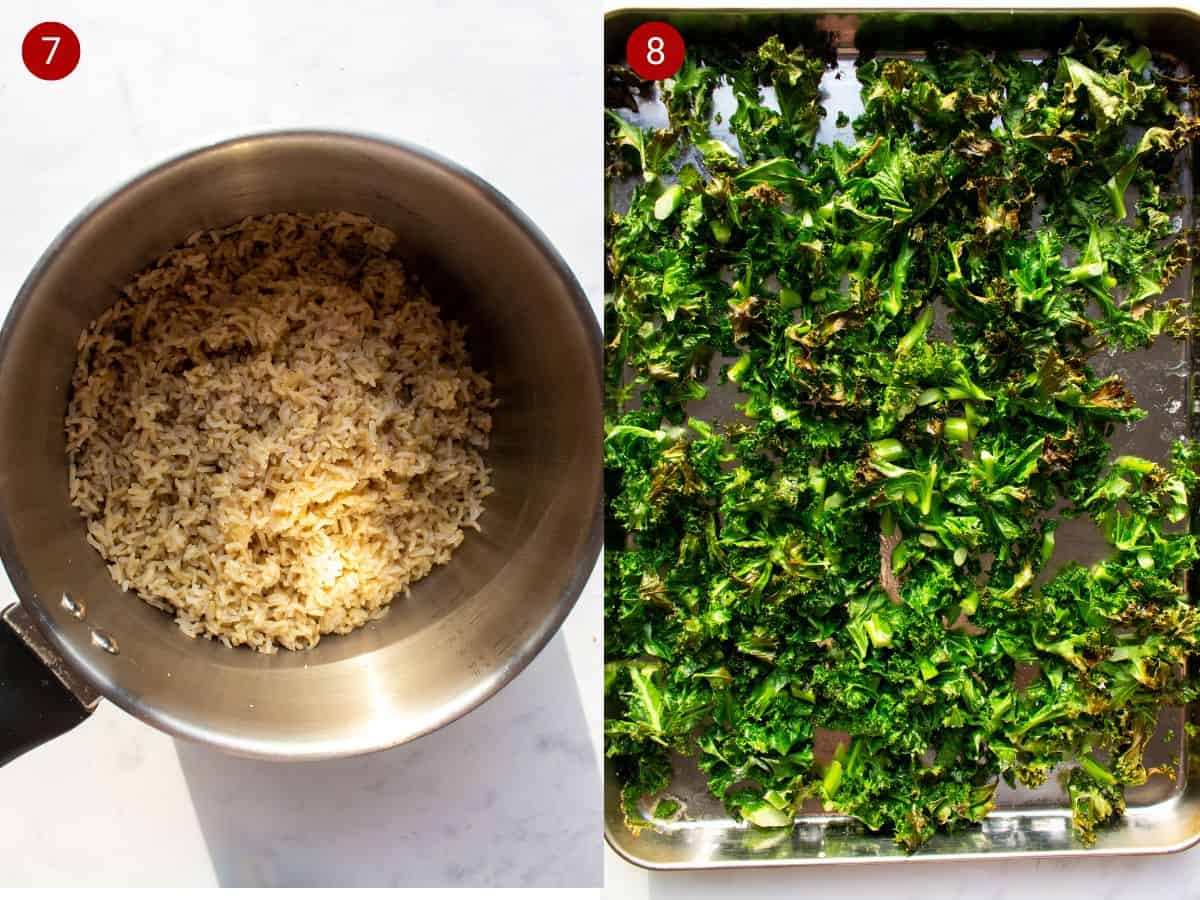
Everything should be ready at this stage so you can serve the saucy chicken satay with a portion of rice & crispy baked kale. Garnish with the reserved onion and optional chilli flakes if you like it hotttt.
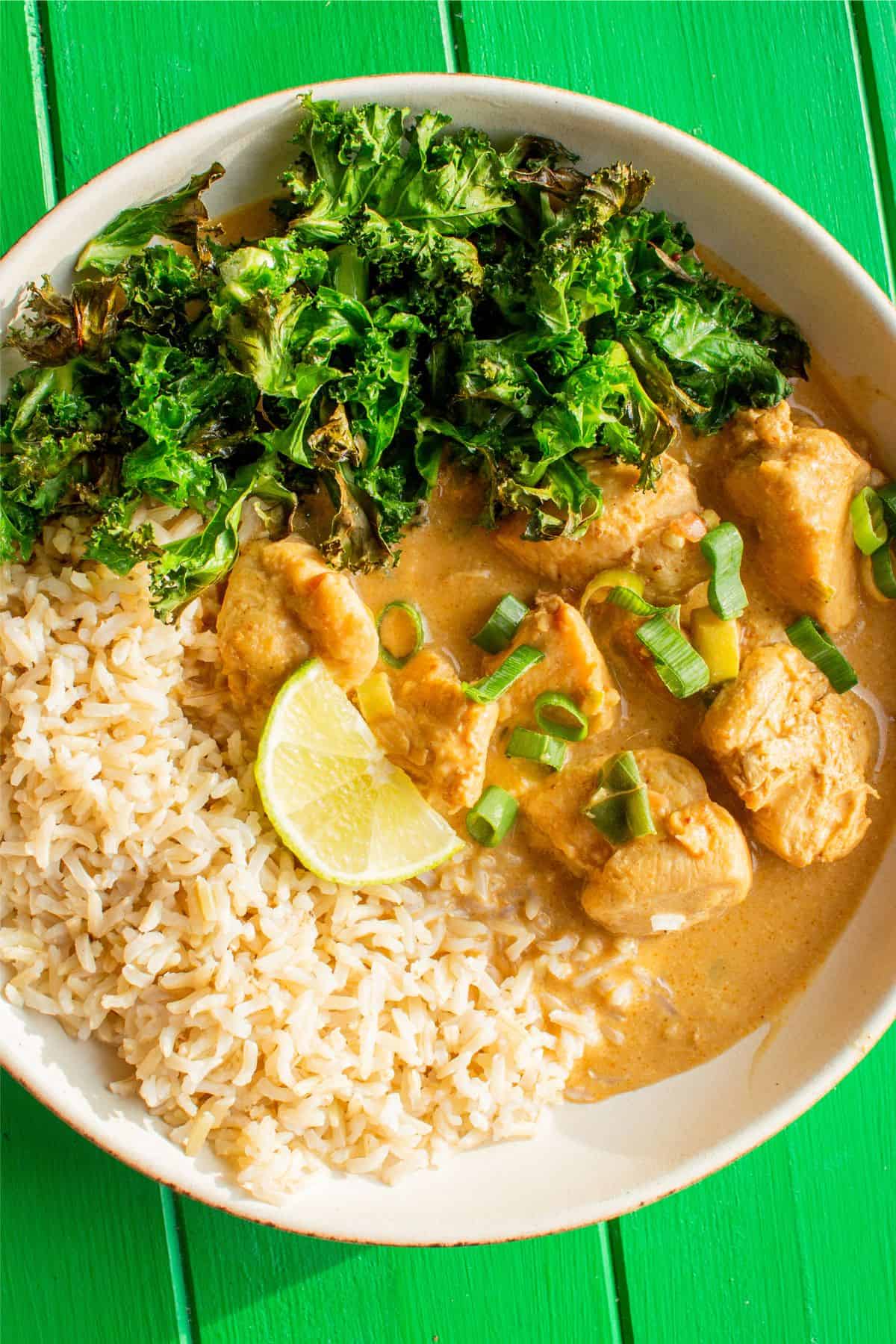
Tips to make this peanut butter curry the best
Use a stainless steel pan rather than a non-stick: You’ll get sticky bits on the pan (called fonde), which will caramelise to form a richer flavour when frying. As long as you keep stirring/deglazing to prevent burning, this will intensify the flavour in an amazing way.
Season as you go: Seasoning with salt as you go will ensure that every element of your chicken satay curry is optimally seasoned. Don’t go overboard though, as you don’t want it to be too salty, just add a reduced amount of salt at each stage.
Spread the kale out as much as possible on your baking tray: This will maximise crispiness by preventing the kale from steaming.
Use a crunchy peanut butter: To add some crunch and little pieces of whole peanuts throughout the sauce. If you want it extra smooth though, you can use smooth peanut butter.
Other peanut recipes for you to try … Peanut Noodles with Roasted Veg and 10 Minute Peanut Butter Noodles
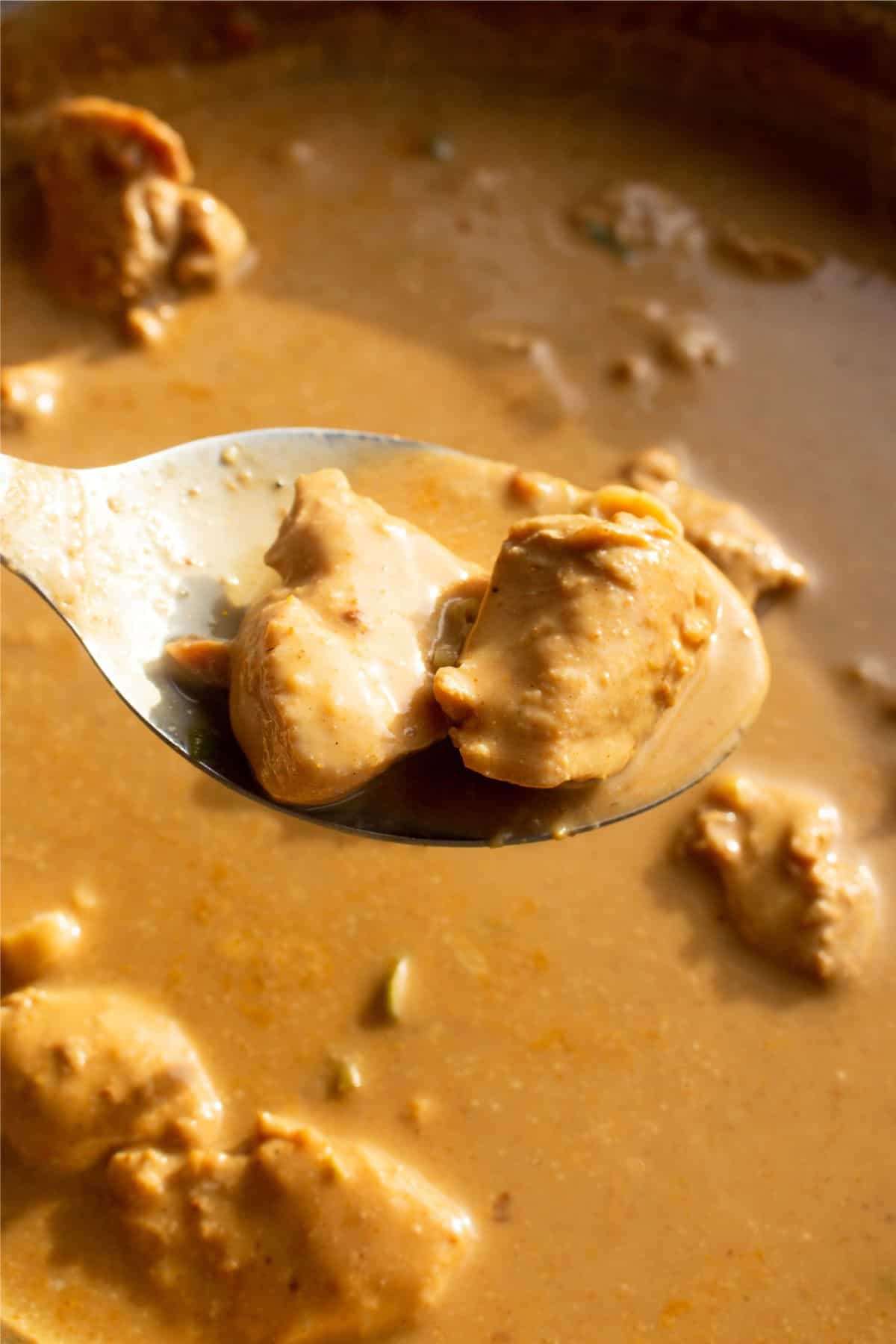
FAQs
I’ve gone for diced chicken with this recipe, so you want small chunks that are approx 1 inch pieces. It’s the size of the chicken pieces, you often have in Indian curry recipes.
This keeps in the fridge for 4-5 days. Ensure that you refrigerate as soon as it’s cool enough to go in the fridge. Microwave on high for 2 minutes to reheat, or on the hob until piping hot. Serve with freshly sliced spring onion and optional chili flakes.
This chicken satay curry is freezable for up to 3 months! The curry and rice freeze really well with no compromise to flavour. The crispy kale doesn’t freeze the best, as it loses it’s crispiness. For the kale, freeze the kale uncooked and then defrost, pat the kale dry and bake when it’s time to eat. To defrost, leave to thaw in the morning and follow the reheat instructions mentioned above.
More weeknight dinner recipes for you to try … Chicken Vermicelli Noodles, 5 Ingredient Spaghetti Chorizo Carbonara and Simple Prawn Red Thai Curry
If you tried this Peanut Butter Chicken Satay Curry recipe, it would be mean so much to me if you could leave a review & a star rating to let me know how you found it! I love hearing about your experiences – it motivates me to keep creating more and more recipes for you guys 💛 Let’s get cooking! – Mimi x
Peanut Butter Chicken Satay Curry
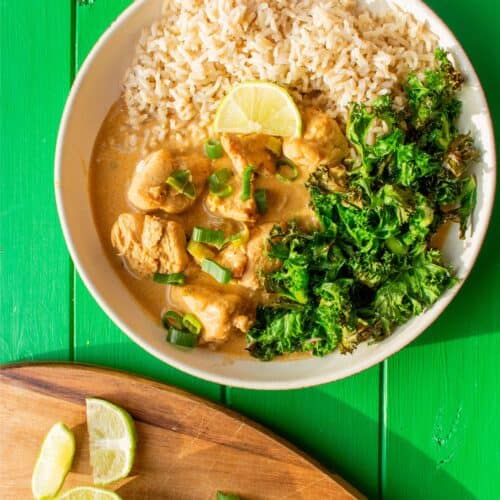
Ingredients
- 600 g chicken breast (£4.20)
- 4 tbsp crunchy peanut butter (£1.25/5)=(£0.25)
- 50 g spring onions (£0.50)
- 2 limes (£0.25x2)=(0.50)
- 1 tin of coconut milk (£0.75)
- 250 g long grain rice (£0.52/4)=(£0.13)
- 1 bag of kale (£0.65)
Cupboard Essentials
- 2 tbsp coconut/ olive oil
- 1.5 tbsp of curry powder
- 1.5 tbsp soy sauce
- 400 ml vegetable stock
Method
PREHEAT OVEN TO 200°C
- Start by adding the rice to a medium saucepan with a 2:1 ratio of water to rice. Set your timer according to the packet time. Mine was 18 minutes. Next, rinse the spring onions. Chop them in half, dividing the greener half and the lighter half of the onion. Also prep the chicken by slicing it into thin pieces
- Slice the greener half on a bias (diagonally), setting aside to use as a garnish and slice the white half regularly to add to the sauce.
- In a large saucepan, add the lighter sliced onion & chicken along with a tbsp of olive oil. Gently fry for around 4 minutes.
- After 4 mins, add the curry powder and fry for a further minute.
- Add the peanut butter, soy sauce, a pinch of salt and the juice of a whole lime to the saucepan. This will be a very thick mix so add a splash of coconut milk to combine on a low heat.
- Slowly pour the coconut milk in as you stir to form the satay sauce. Once combined, add 400ml of vegetable stock.
- Reduce to a low simmer, timer set to 15 minutes. During this time, wash the kale and add to a large baking tray with a tbsp of olive oil. Use your hands to make sure all the kale bits get an even coating of oil. Pop in the oven for 10 minutes to get nice & crispy.
- Everything should be ready at this stage so you can serve the saucy chicken satay with a portion of rice and crispy baked kale. Garnish with the reserved onion and optional chilli flakes if you like it hotttt.
Notes
- Opt for a stainless steel pan instead of a non-stick one to enhance flavor: Sticky bits (fonde) will form and caramelise, intensifying the taste when frying. Stir and deglaze to prevent burning.
- Adding salt at each stage ensures optimal seasoning. Avoid excessive saltiness by using a reduced amount at each step.
- Maximise kale crispiness by spreading it out on the baking tray: Prevent steaming by spreading the kale thinly, resulting in a crispier texture.
Nutrition
Leave a comment and a rating!

- Weekly meal plans with a £20 budget
- 150+ exclusive recipes
- Personal dashboard
- Exclusive step by step videos
- Shopping list tools
- Advert Free experience

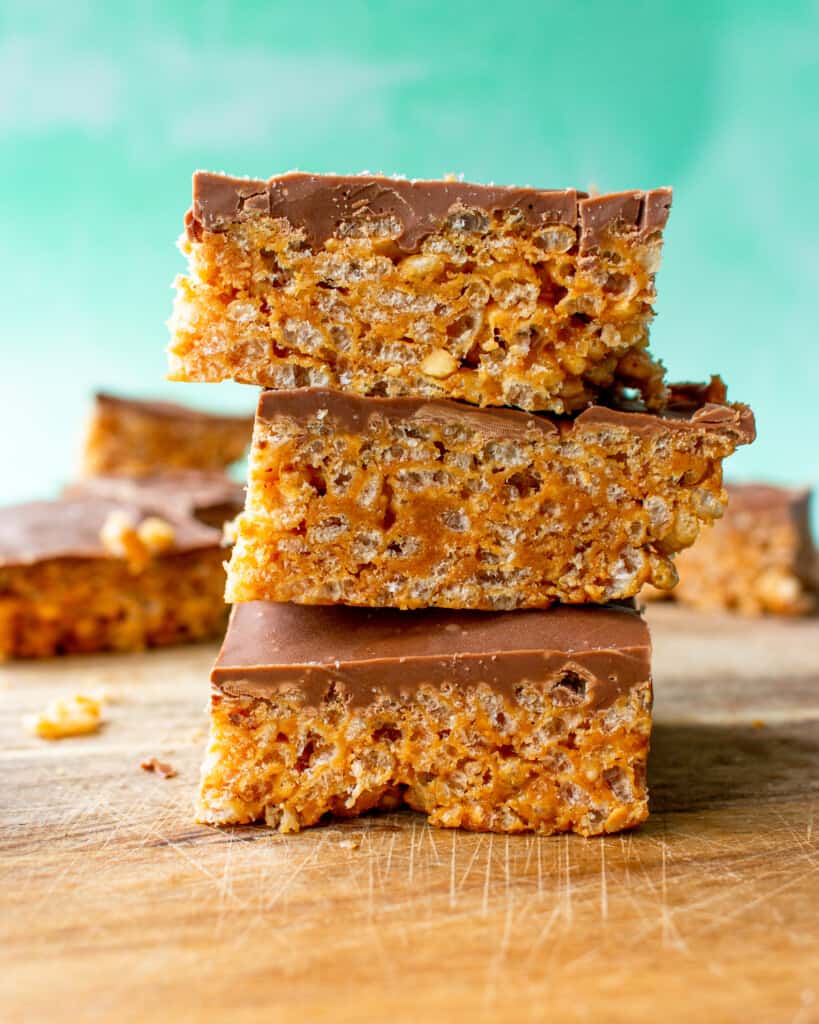
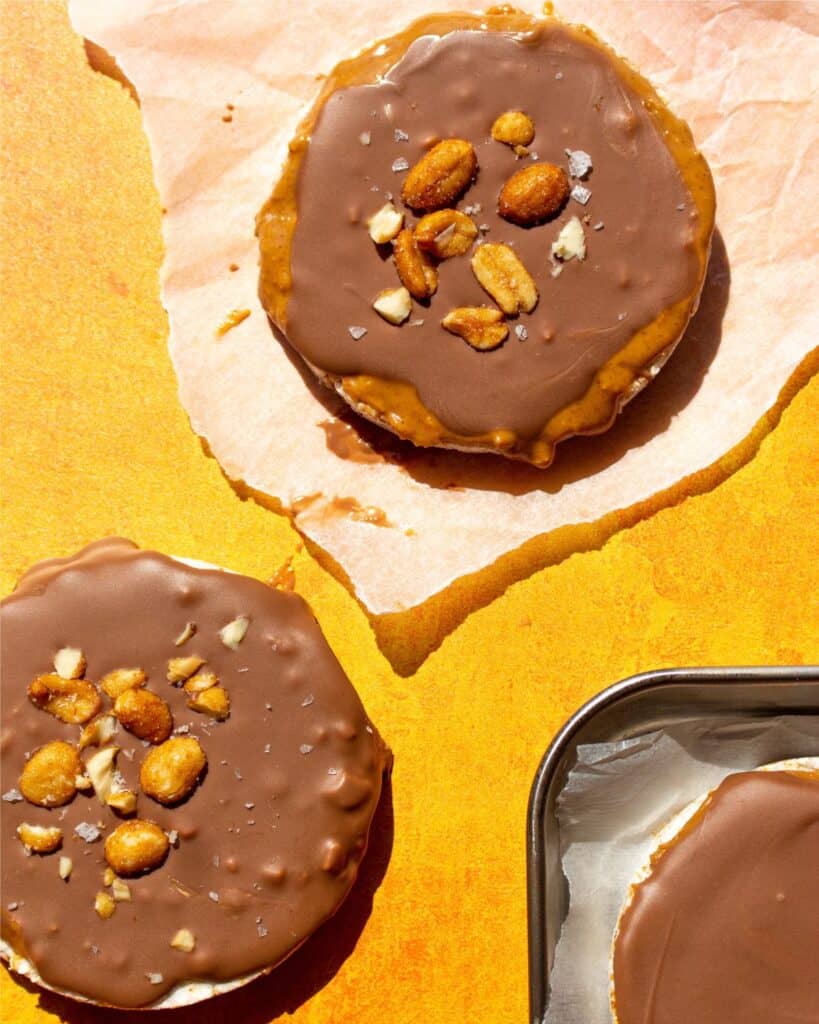
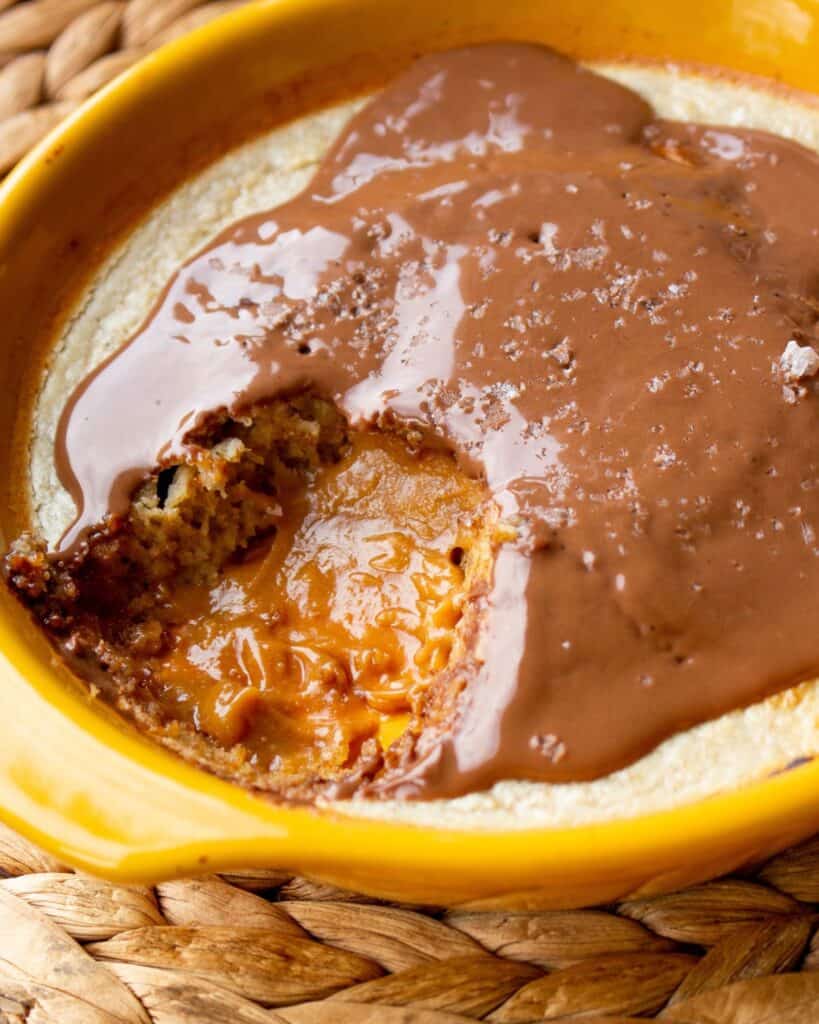
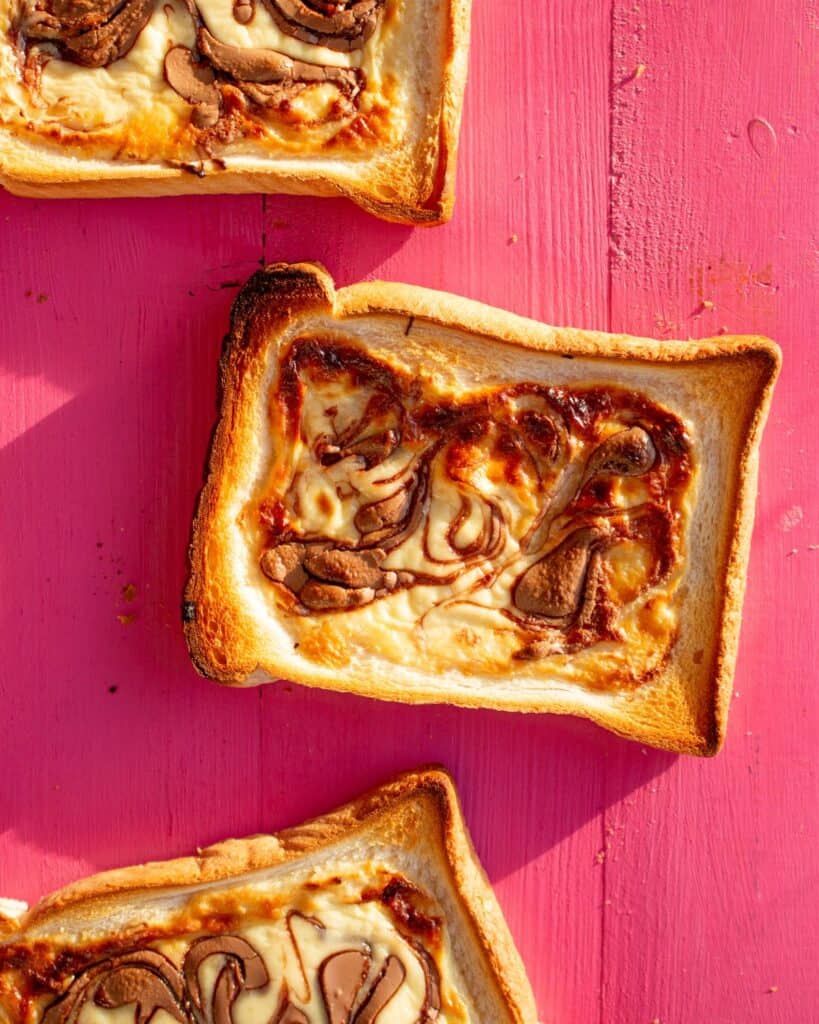

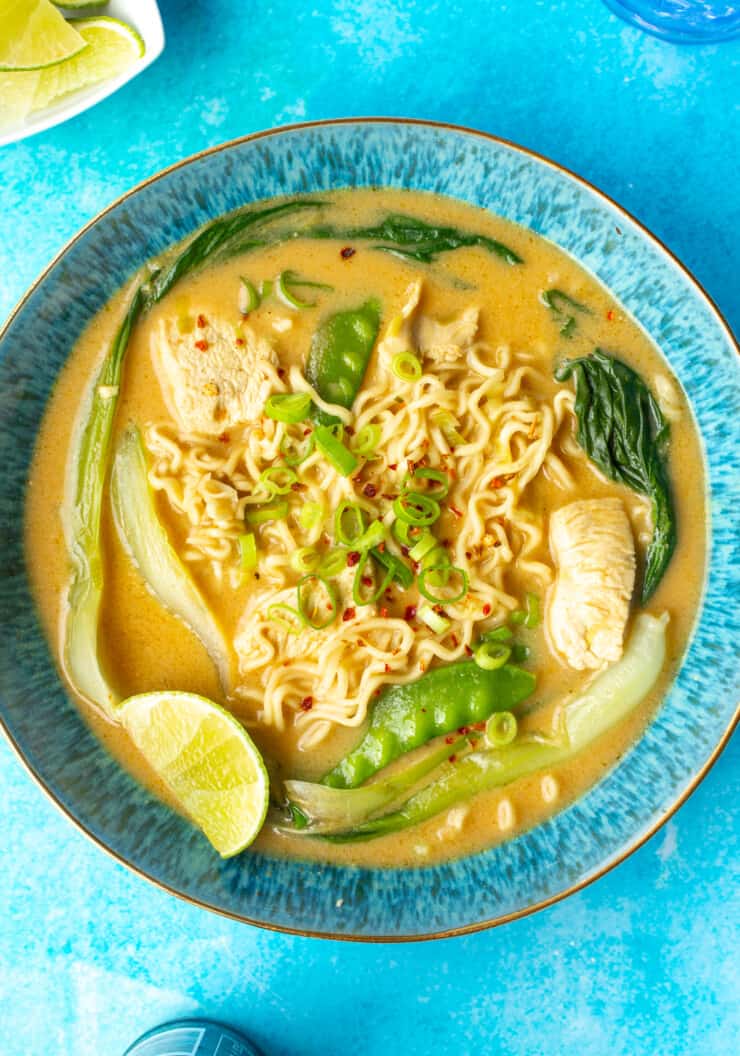
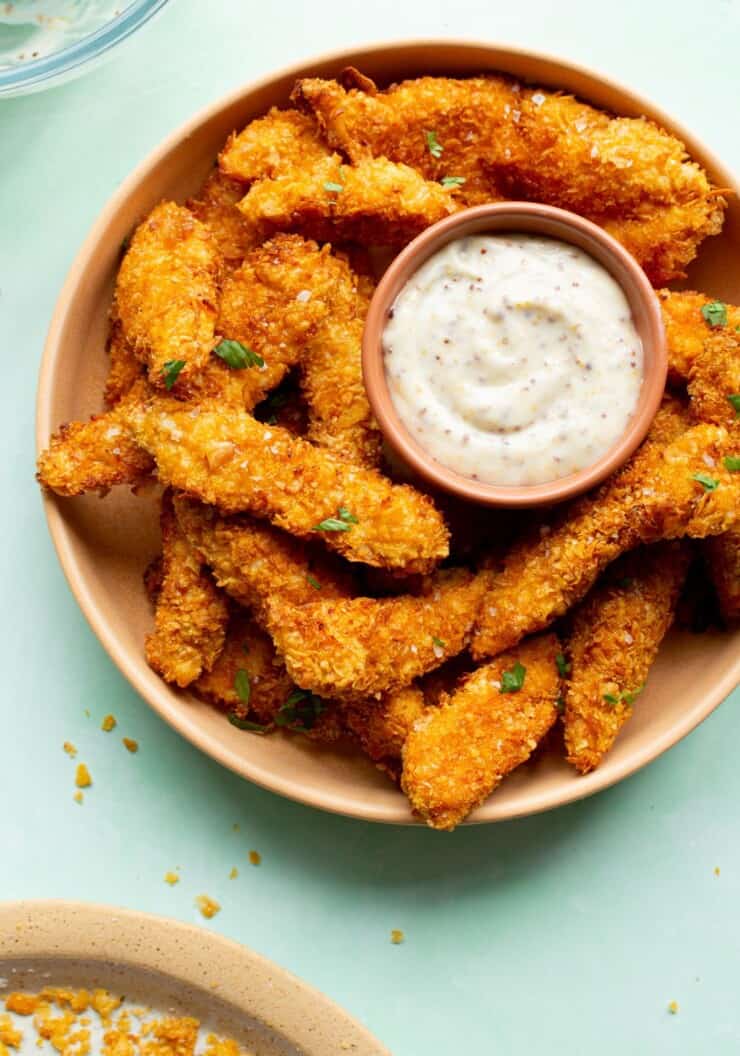

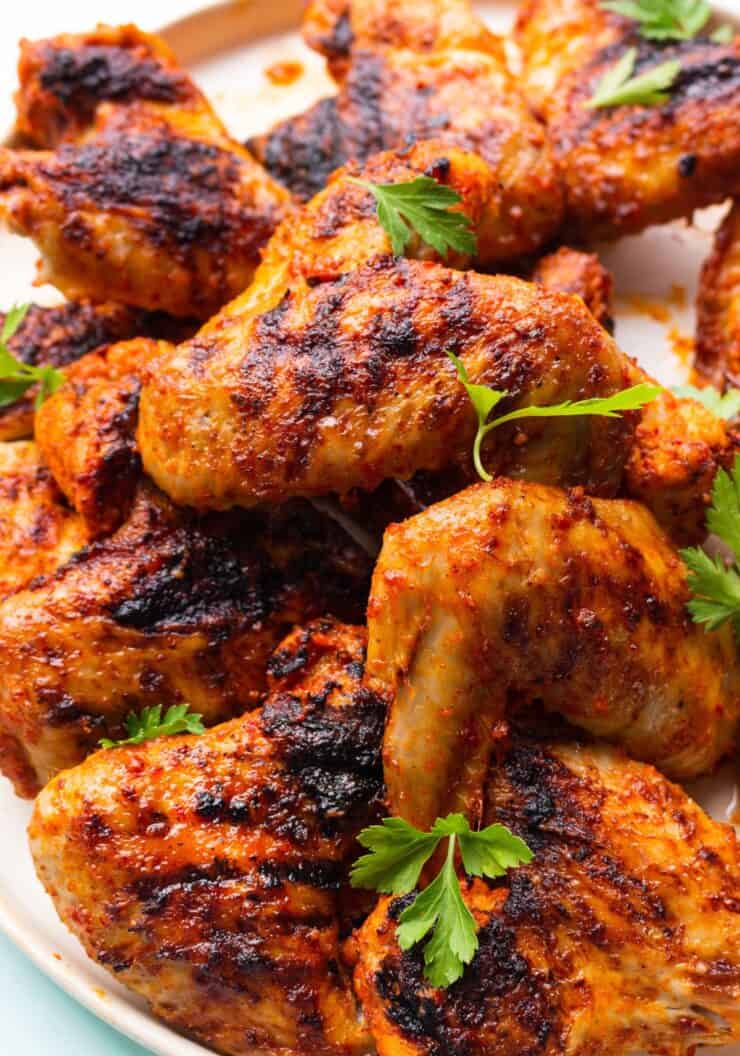
Comments